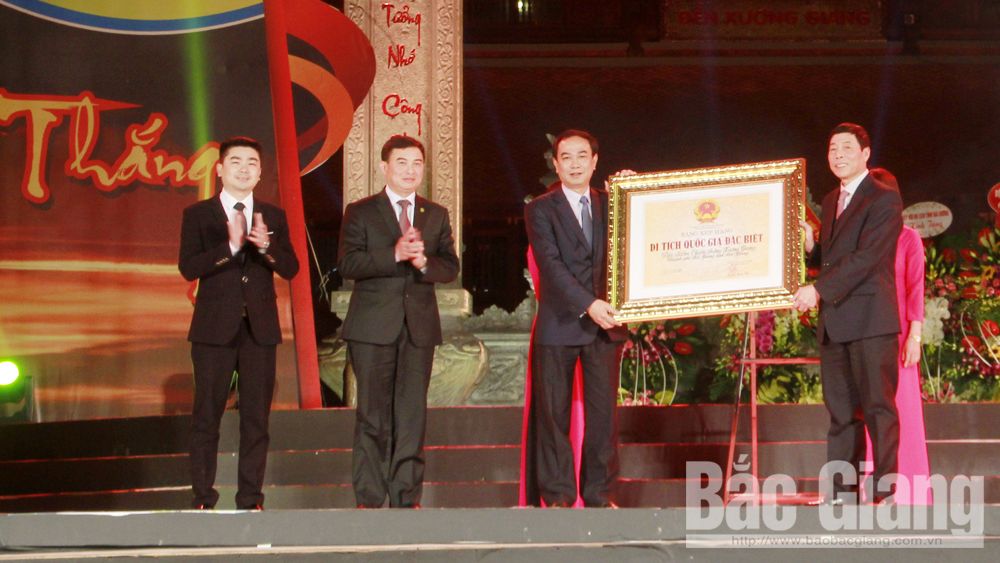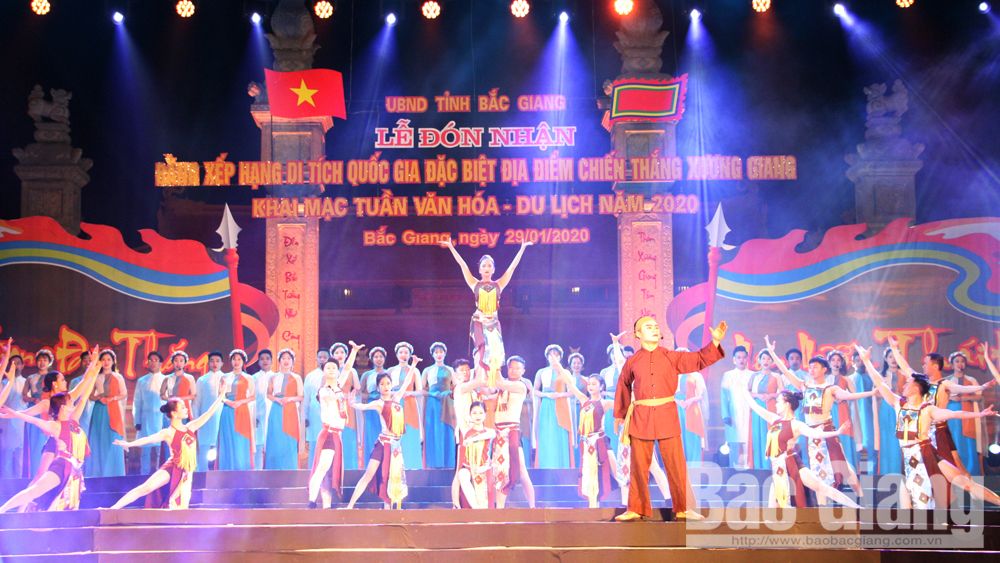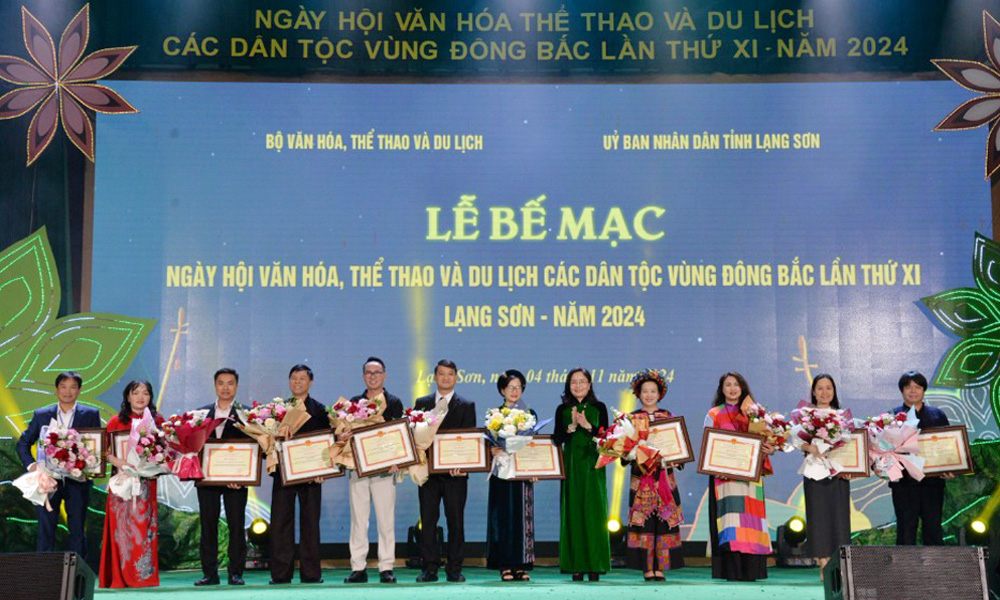Bac Giang receives certificate recognizing Xuong Giang Victory location as special national relic site
The ceremony was attended by Bui Van Hai, member of the Central Party Committee, Secretary of Bac Giang provincial Party Committee (PPC), Chairman of the provincial People’s Council, Pham Thi Hai Chuyen, former Chairwoman of the provincial People’s Committee, Chairwoman of Vietnam Association of the Elderly, Duong Van Thai, Chairman of the provincial People’s Committee and Ngo Sach Thuc, Vice Chairman of Vietnam Fatherland Front.
 |
|
The PPC’s Secretary Bui Van Hai authorized by the Prime Minister presents the certificate recognizing the Xuong Giang Victory location as a special national relic site to the provincial Cultural Department and the municipal People’s Committee of Bac Giang city. |
In his opening remark, Le Anh Duong, Vice Chairman of the provincial People’s Committee, Head of the Organising Board for the 2020 Culture and Tourism Week revised the Xuong Giang Victory 593 years ago.
Accordingly, nearly 600 years ago when Dai Viet was under domination of Chinese Ming’s invaders, the hero named Le Loi and many soldiers from the land of Lam Son rose up in arms.
In middle 1426, Lam Son army was expanded, consolidated the liberation area and marched to the north to surround Dong Quan citadel.
Ming’s General named Wang Tong tried to hold down here and cried for 150,000 reinforcements.
As recognising Xuong Giang citadel located in a key position - the northern gateway toward Dong Quan, Le Loi, Nguyen Trai and the staff decided to destroy the citadel to cut the enemy’s reinforcements.
In late 1426, Lam Son army started controlling Xuong Giang citadel. It was defeated 10 days before Liu Sheng led 10,000 soldiers to the Vietnam-China border gate, proper time for Vietnamese army and people to prepare for fighting against the enemy’s powerful reinforcement force.
On the way to rescue Dong Quan, Liu Sheng and some 10,000 soldiers were defeated at Chi Lang Pass on 10 October 1427. 5 days later, General Liang Ming and the reinforcements were surrounded at Can Tram.
3 days later, ten thousands of enemies were defeated at Ho Cat. Despite being drastically defeated at Chi Lang, Can Tram and Ho Cat, Ming’s troops led by Admiral Thoi Tu and Minister Wang Fu tried to move to Xuong Giang citadel. However, when they arrived, the citadel was controlled by Lam Son’s troop; hence, they had to build fences in the field to wait for the second rescuing troop headed by Mu Sheng.
 |
|
The special art programme themed "Xuong Giang dai thang – Non nuoc thai hoa” (Xuong Giang Great Victory - Peaceful Country). |
On 3 November 1427, Lam Son insurgent group attacked Ming’s troops in Xuong Giang citadel. All of the commanders including Thoi Tu, Wang Fu and Su An and ten thousands of soldiers were caught or killed.
The sounding Xuong Giang victory ended 20 years of Ming’s invasion against Dai Viet. In order to acknowledge the contributions of ancient people to the nation, a majestic temple was built in the relic of Xuong Giang citadel, Bac Giang city becoming a destination for a mass of people and tourists.
Xuong Giang Victory Festival is solemnly organised annually on the 6th day of the first lunar month.
After the opening remark, the PPC’s Secretary Bui Van Hai authorized by the Prime Minister presented the certificate recognizing the Xuong Giang Victory location as a special national relic site to the provincial Cultural Department and the municipal People’s Committee of Bac Giang city.
A special art programme themed "Xuong Giang dai thang – Non nuoc thai hoa” (Xuong Giang Great Victory - Peaceful Country) continued the event.
Reporters
 Bắc giang
Bắc giang















Reader's comments (0)